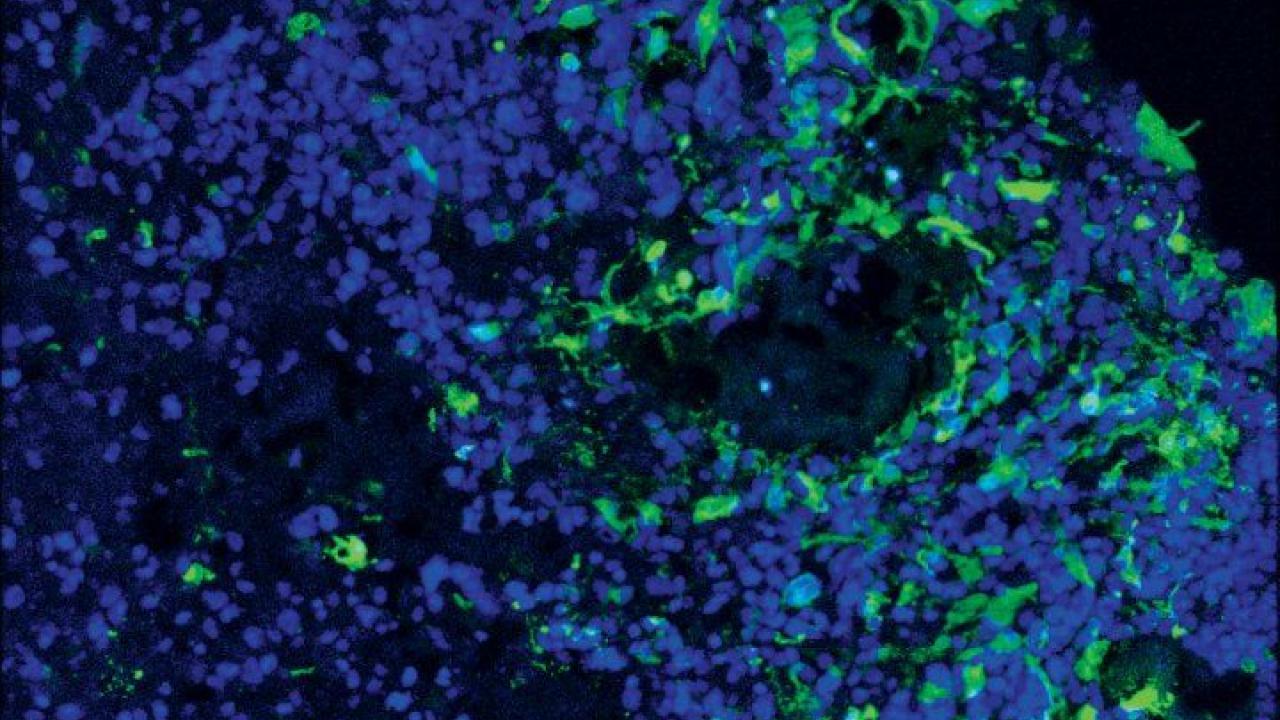
Microscopy of glioblastoma cells invading a brain organoid, with glioblastoma cells in green and brain organoid cells in blue
Glioblastomas (GBMs) are incurable brain tumors with a prognosis of about one-and-a half years on average. They are highly resistant to treatment and have defied all attempts at precision therapy.
In their study published December 20 in Nature Cancer, first author Lin Wang, PhD and senior author Aaron Diaz, PhD, found that phenotype switching, as opposed to genetic evolution, may be the escape mechanism that explains the failure of precision therapies to date. They found that some cells shift to a mesenchymal, radiation-resistant phenotype (state) as a stress response following standard therapy.
“We asked if there is another mechanism that explains therapeutic resistance,” said Diaz, associate professor of neurological surgery at the UCSF Weill Institute for Neurosciences. “Our study concludes that, rather than a genetic evolution, there is a phenotypic plasticity or transition which allows these cells to evade therapy.”
To identify what drives treatment resistance to standard therapy, as well as the cellular source of recurrent disease, UCSF researchers used single-nucleus RNA, open-chromatin, spatial profiling to analyze 86 primary-recurrent, patient-matched, paired GBM specimens. This unprecedented cohort represented decades of biobanking at UCSF.
With access to thirty years’ worth of GBM’s, the scientists were able to present novel cell-intrinsic and cell-extrinsic targets as well as a single-cell multi-omics atlas of GBM under therapy. This was the first time that researchers were able to comprehensively map intra-cellular signaling in the tumor-anatomical niches of recurrent GBM and identify novel cell-extrinsic therapeutic targets.